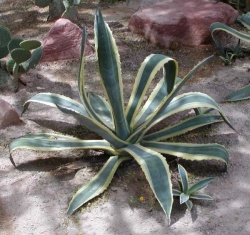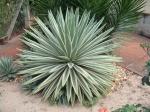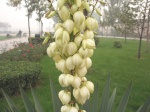Agavaceae
| Agavaceae |
|---|

|
| Scientific Classification |
|
| Genera |
Agavaceae is one of the families in the taxonomic order Liliales. This family includes many of the well-known desert or dry zone type plants such as Yucca, Hesperaloe, Agave, Manfreda, Polianthes, Beschorneria, and Furcraea. The Agavaceae is a widespread perennial found in tropical and warm temperate regions. The family includes about 550-600 species in around 18 genera, which has long presented special difficulties for taxonomy. In fact, some systems place the family within the order Asparagales. The most familiar species is Agave americana, a native of tropical America called the century plant or American aloe.
Anatomy
The type-genus Agave has large and thick fleshy leaves and sharp point on the ends. It also is parallel-veined. The stout stem is usually short, the leaves apparently springing from the root. They may range from extremely short to tree-like heights such as the Joshua tree. They usually appear long and pointed, often with a hardened spine on the end, and sometimes with additional spines along the margins.
Reproduction
The plants in the order Agavaceae are flowering plants and therefore reproduce sexually. Inside the flowers there is an pistil, ovary, and stamen. On the stamen there is pollen. When insects come inside the flower they take away some of the pollen. If they have been in another flower previously, they will leave some of the pollen from that flower. This is done with intent in the case of the Joshua Tree. After pollination, the seeds will develop inside the plant ovary.
Ecology
Each rosette grows slowly to flower only once. During flowering, a tall stem grows from the center of the leaf rosette and bears a large number of tubular flowers. After development, the original plant dies and the fruit remains.
Agaves are the most popular genus in the family Agavaceae. They are succulent plants that usually grow in warm temperatures. They grow in the southern and western United States of America and in central and tropical South America. Agave nectar has been used as an alternative to sugar in cooking.
Gallery
Variegated Caribbean Agave
(A. angustifolia Marginata)
Genus: Agave
References
- Agavaceae by wikipedia
- Agavaceaeby Agavaceae Website
- link Agavaceae










